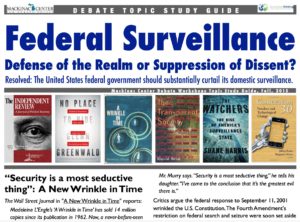• Economic Engagement with Cuba, Mexico, Venezuela Study Guide  (for 2013 NSDA topic and relevant for 2018-2019 immigration reform topic). Excerpt: The elephant in the room for U.S./Mexico policy continues to be legal and illegal immigration… Michael Barone writes that immigration to has been episodic and unpredictable through American history. And the latest immigration surprise was astonishing in scale, transforming both the U.S. and Mexico:
(for 2013 NSDA topic and relevant for 2018-2019 immigration reform topic). Excerpt: The elephant in the room for U.S./Mexico policy continues to be legal and illegal immigration… Michael Barone writes that immigration to has been episodic and unpredictable through American history. And the latest immigration surprise was astonishing in scale, transforming both the U.S. and Mexico:
In a single generation, between 1980 and 2007, more than 10 million people migrated, legally or illegally, from Mexico to the U.S. Today there are more than 12 million Mexican-born people in the U.S. and millions of American children who are their offspring– amounting to almost 10% of the nation’s population. That is exponentially larger than in 1970, when there were less than one million Mexican-born people in the country, or 1980, when there were two million. The Mexican migration, and the similarly large migration of others from the rest of Latin America, has in just one generation reshaped the nation. (“A Nation Built for Immigrants,” Wall Street Journal, Sept. 21-22, page C1.)
• Economic of Space Exploration Study Guide with focus on importance of lowering space transportation costs. Decades of NASA control of rocket and space shuttle development and operation have raised space transportation costs, slowing space exploration and tourism. Economics of Space Exploration Study Guide (2011)
control of rocket and space shuttle development and operation have raised space transportation costs, slowing space exploration and tourism. Economics of Space Exploration Study Guide (2011)
 • For the NSDA federal education funding and regulation topic, federal surveillance of students is debated. This 8-page study guide pdf was for the 2015 surveillance topic: FedSurv-MCPP-SG2015sm
• For the NSDA federal education funding and regulation topic, federal surveillance of students is debated. This 8-page study guide pdf was for the 2015 surveillance topic: FedSurv-MCPP-SG2015sm

Federal Transportation Study Guide
• Click here for 8-page pdf of federal transportation policy study guide: FedTransportReformSG
…Congress decided to build the interstates on a pay- as-you-go basis; that is, the roads would be built only as gas taxes were collected to pay for them. States were not allowed to borrow money to build the roads and pay back that money out of their share of federal gas taxes. This gave highway planners incentives to make sure that the interstates they built were, for the most part, needed by users who were willing to pay for them. [Then federal transportation policy shifted as gas taxes were diverted to other uses…]
 • Africa Public Health study guide pdf, relevant for 2017 NSDA Nationals Public Forum topic:
• Africa Public Health study guide pdf, relevant for 2017 NSDA Nationals Public Forum topic:
Resolved: In East Africa, the United States federal government should prioritize its counterterrorism efforts over its humanitarian assistance. AfricaStudyGuideOct8
Ocean Policy Study Guide (pdf), for the next time you find yourself out to sea with an oceans debate topic (plus, relevant to current Stoa LD property rights/public needs topic. Property rights key to addressing overfishing and coastal fisheries mismanagement.) RehmkeOceanExDevStudyGuide

Liberty of Contract handout (pdf) for labor law topic (& past federal court system reform topic). FedCourts-LibertyContract. Blurb for Liberty of Contract, by Ronald Rotunda notes:
As students of constitutional history know, the Lochner era (1897-1937) is typically vilified as a time when judges imposed their personal opinions to invalidate laws that regulated the economy. Professor Mayer offers a far more complex and nuanced view of that era as a time with judges often, but not always, invoked a presumption of liberty. He shows that Lochner-era justices protected not only economic but personal rights as well, such as the right of parents to teach their children in a foreign language or to send their children to a private school, whereas anti-Lochner justices like Oliver Wendell Holmes rejected such a presumption.
• Related: Overruled: The Long War for Control of the U.S. Supreme Court (pdf handout) FedCourts-Overruled
… the aggressive legal approach once associated with Justice Field and his successors has come roaring back to life in the early twenty-first century. Its modern followers have no patience with judicial restraint and little use for majority rule. They want the courts to police the other branches of government striking down any state or federal law that infringes on the broad constitutional vision of personal and economic freedom, an approach that has been dubbed “principled judicial activism.” (p. 7)

